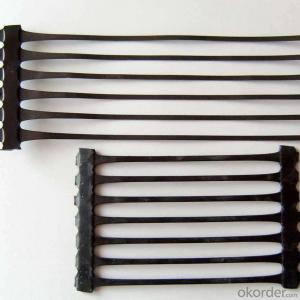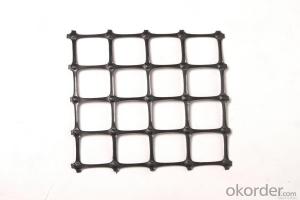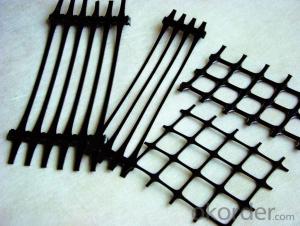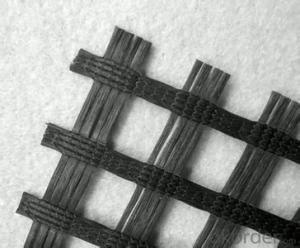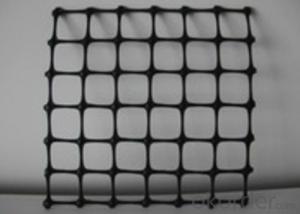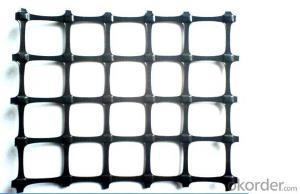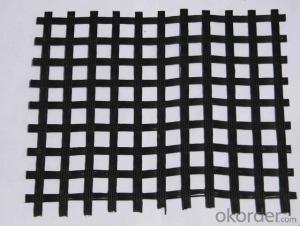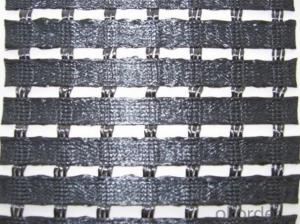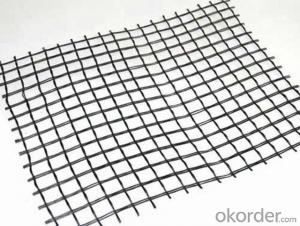Polyester Anti-aging Geogrid for Constructional Reinforcement
- Loading Port:
- Shanghai
- Payment Terms:
- TT or LC
- Min Order Qty:
- 50000 m²
- Supply Capability:
- 2000000 m²/month
OKorder Service Pledge
OKorder Financial Service
You Might Also Like
Polyester Anti-aging Geogrid for Constructional Reinforcement
Description Of Polyester Anti-aging Geogrid for Constructional Reinforcement:
Fiberglass geogrid is based on fiberglass woven cloth coated with modified bitumen or PVC, it was developed to address the problem of pavement cracking on highways, roads and runways, driven by a need to reduce cost for infrastructure maintenance and repair.
It is characterized by high tensile strength in axial and lateral directions, low stretch rate, alkali-resistance, low temperature- resistance, as well as convenience in construction and low price. It can be used on pitch pavement to prevent cracks and prolong pavement service life. It also can be used as a basal reinforcement material for hillsides, reservoirs, harbors, ports, water channels, seawalls, etc.
Main Features of Polyester Anti-aging Geogrid for Constructional Reinforcement:
1.High tensile strength, low elongation.
2.No long-term creep: the product can keep for a long time performance.
3.Thermal stability: fiber glass melting temperature above 1000 ℃.
4.The compatibility with asphalt.
5.Physical and chemical stability.
Specifications of Polyester Anti-aging Geogrid for Constructional Reinforcement:
Tensile Strength (KN) | Warp | >30 | >50 | >60 | >80 | >100 | >120 | >150 | >200 |
Weft | >30 | >50 | >60 | >80 | >100 | >120 | >150 | >120 | |
Elongation(%) | <4< p=""> | <4< p=""> | <4< p=""> | <4< p=""> | <4< p=""> | <4< p=""> | <4< p=""> | <4< p=""> | |
Mesh Size(mm) | 25.4*25.4 | 25.4*25.4 | 25.4*25.4 | 25.4*25.4 | 25.4*25.4 | 25.4*25.4 | 25.4*25.4 | 25.4*25.4 | |
Elastic Modulus | 76 | 76 | 76 | 76 | 76 | 76 | 76 | 76 | |
Width(m) | 1~6 | 1~6 | 1~6 | 1~6 | 1~6 | 1~6 | 1~6 | 1~6 | |
Length(m) | 50~300 | 50~300 | 50~300 | 50~300 | 50~300 | 50~300 | 50~300 | 50~300 | |
Temperature Resistant(℃) | -100~280 | -100~280 | -100~280 | -100~280 | -100~280 | -100~280 | -100~280 | -100~280 | |
Resin Content (%) | 18~20 | 18~20 | 18~20 | 18~20 | 18~20 | 18~20 | 18~20 | 18~20 | |
Glue Type | Bitumen PVC SBR soakage | Bitumen PVC SBR soakage | Bitumen PVC SBR soakage | Bitumen PVC SBR soakage | Bitumen PVC SBR soakage | Bitumen PVC SBR soakage | Bitumen PVC SBR soakage | Bitumen PVC SBR soakage | |
Applications of Polyester Anti-aging Geogrid for Constructional Reinforcement:
Strengthen bitumen concrete roadway and reduce and prevent various kinds of reflection gaps on roadway.
1.Suitable for highway, railway, airport road of subgrade enhancement.
2.Suitable for the large parking lot and port freight yard that the foundations of the permanent load increased.
3.Suitable for railway, highway slope protection.
4.Suitable for culverts.
5.Suitable for the uniaxial tensile geogrid reinforced soil secondary enhancement, after further enhance soil, prevent soil erosion.
6.Mining, tunnel reinforcement.
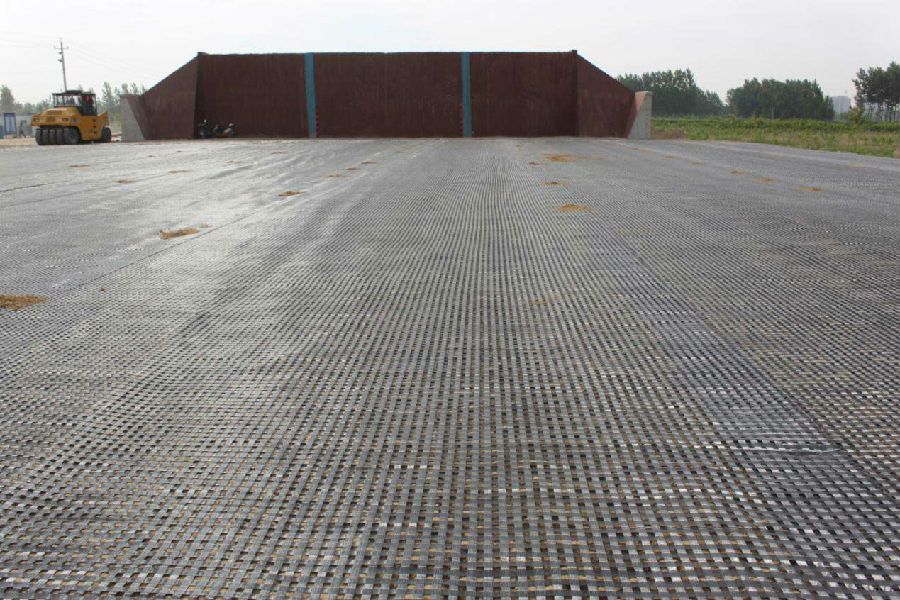
IMages of Polyester Anti-aging Geogrid for Constructional Reinforcement:
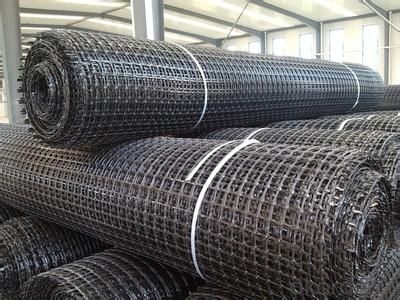
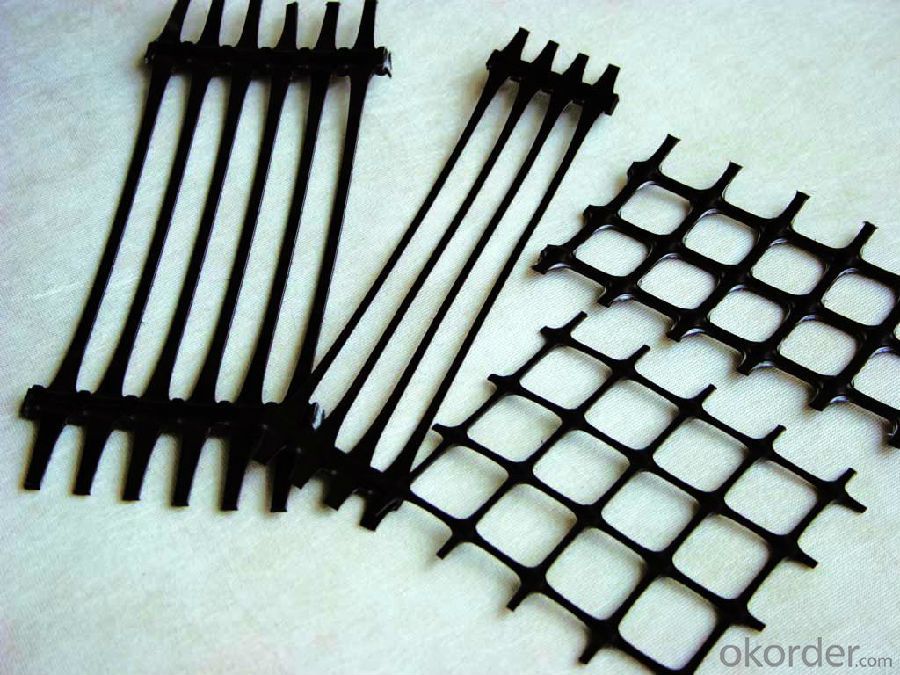
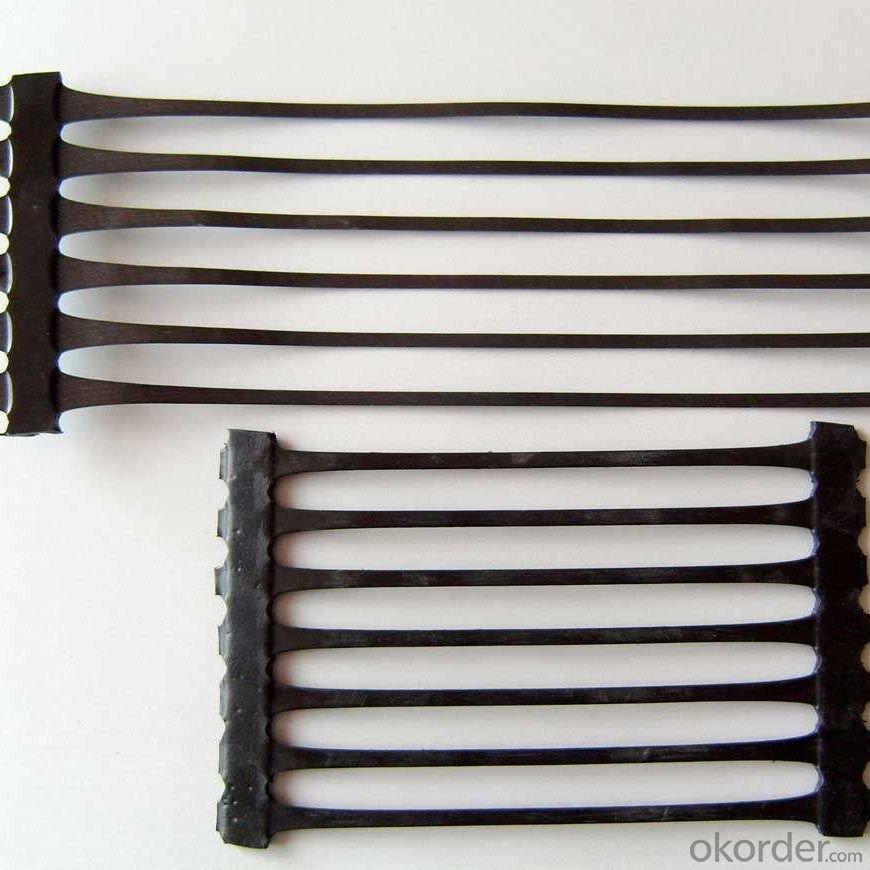
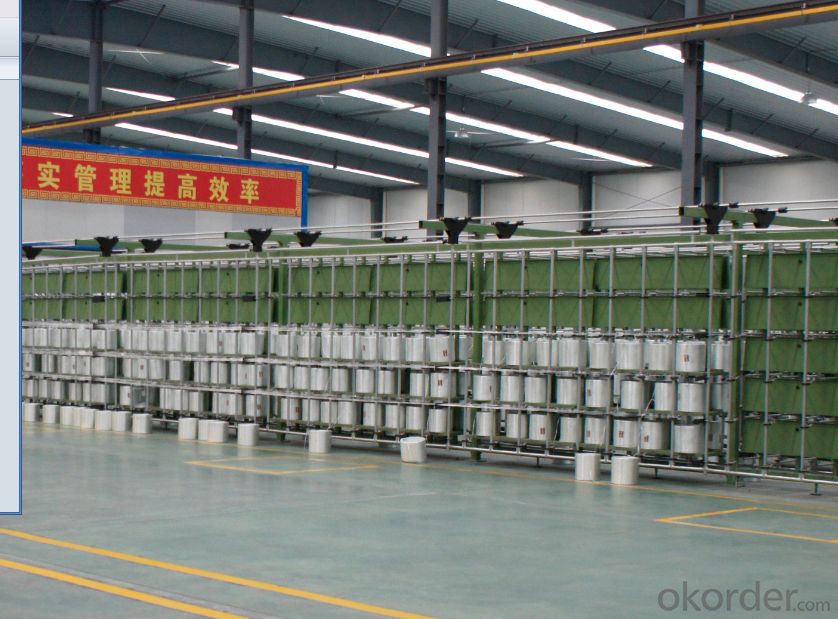
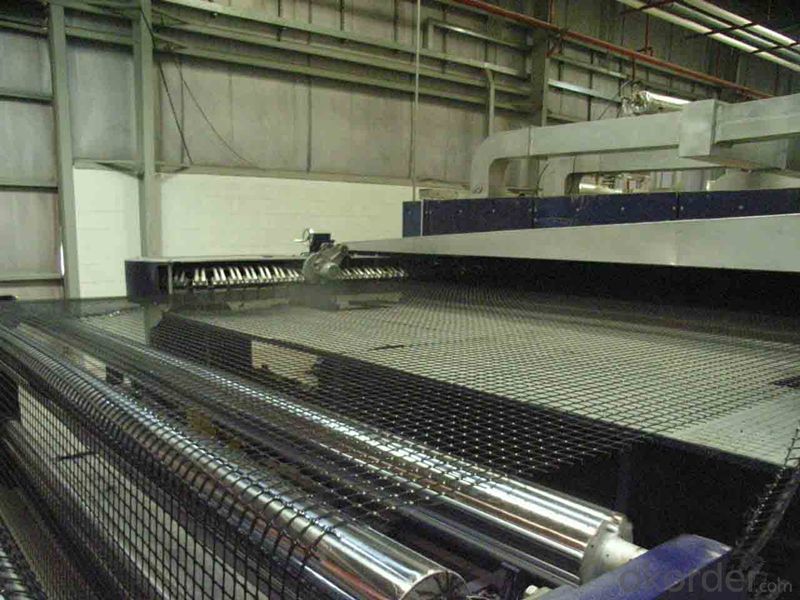
FAQ of Polyester Anti-aging Geogrid for Constructional Reinforcement:
1. What are we supplying?
We are specialized in producing Geosynthetic materials, like Geogrid Series, HDPE Geocell, Geonet, Geotextile, Geomat, Tri Denmensional Composite Grainage Geonet, and Geomembrane Series.
.
2. How Many years experience do we have?
We have been exported to more than 20 countries in the past 15 years.
3. How long do we usually reply your request?
We always reply our customer within 24 hours.
- Q:What are the factors that affect the long-term oxidation resistance of geogrids?
- The factors that affect the long-term oxidation resistance of geogrids include the type and quality of polymer used in the geogrid manufacturing, the presence of antioxidants or stabilizers in the polymer, exposure to environmental conditions such as temperature, humidity, and UV radiation, as well as the level of mechanical stress or strain experienced by the geogrid over time.
- Q:Where is the geogrid used?
- 1 strengthen the embankment, can effectively spread the load distribution to improve the bearing capacity of subgrade stability and prolong the service life; 2 can bear larger alternating load; 3 to prevent the loss of crack and deformation, caused by subgrade materials; 4 to fill the retaining wall after the self bearing capacity increase, reducing soil pressure, less retaining wall to save costs, prolong the service life and reduce maintenance costs; 5 with spraying anchor concrete construction method for slope maintenance, not only can save 30% to 50% of the investment, but also can shorten the period of more than 6; in the highway subgrade and surface layer and soil geogrid, can reduce the deflection, reduce rutting, delayed crack the emergence time of 3 - 9 times, can reduce the thickness of the layer structure of 36%; 7 is applicable to all kinds of soil, no place to be drawn, saving time and labor; 8 the construction of simple and quick, can greatly reduce the construction cost.
- Q:What are the factors that affect the design of geogrid installations?
- There are several factors that can influence the design of geogrid installations. These include soil type and characteristics, slope stability, anticipated loads and traffic, climate and environmental conditions, project requirements and specifications, and available construction equipment and techniques. Each of these factors must be carefully considered to ensure the successful design and implementation of geogrid installations.
- Q:Details of fiberglass geogrid
- 2, anti fatigue crackIn the old cement concrete pavement asphalt overlay, its main function is to improve the use function of the road, and the contribution to the bearing capacity is not big. The asphalt overlay on the old asphalt concrete pavement is different, and the asphalt overlay will be combined with the old asphalt concrete pavement. Therefore, the asphalt overlay on asphalt concrete pavement, in addition to the emergence of reflective cracks, but also because of the long-term effects of fatigue cracks. We overlay load do stress analysis of old asphalt concrete pavement and the asphalt because of asphalt overlays under flexible surface cover layer of the same nature and the asphalt surface, when subjected to loads, road surface deflection will occur. The surface layer under pressure in direct contact with the wheel of the wheel load in asphalt overlay, the outside edge of the area, the surface layer by force, due to the two force regional force are different in nature, and close to each other, so in the junction of two force area is prone to damage force mutation. Fatigue cracking occurs under the action of long term loads.Fiberglass geogrid in bituminous surface layer, to the compressive stress and tensile stress dispersion in the two block of stress region is formed between the buffer zone, where the stress gradually changes instead of mutation, reduces the stress mutation on asphalt surface damage. At the same time, the low elongation of fiberglass geogrid reduces the deflection of pavement, which ensures that the pavement will not be deformed.
- Q:Can geogrids be used in reinforcement of underground storage facilities for hazardous materials?
- Yes, geogrids can be used in the reinforcement of underground storage facilities for hazardous materials. Geogrids are commonly used in civil engineering and construction projects to enhance the stability and load-bearing capacity of soil structures. By incorporating geogrids into the design of underground storage facilities, they can provide additional reinforcement and prevent soil movement or collapse. This is particularly important when storing hazardous materials, as it helps maintain the integrity and safety of the storage facility.
- Q:How do geogrids help in reducing the risk of landslides?
- Geogrids help in reducing the risk of landslides by providing stability and reinforcement to the soil. They are typically made of high-strength polymers and are installed horizontally or vertically within the soil mass. By interlocking with the soil particles, geogrids improve the overall strength of the soil and enhance its resistance to shear forces. This reinforcement helps to prevent soil movement and sliding, thereby reducing the likelihood of landslides.
- Q:How do geogrids improve the stability of embankments and slopes?
- Geogrids improve the stability of embankments and slopes by providing reinforcement and enhancing the load-bearing capacity of the soil. They are designed to distribute the applied forces more uniformly, reducing the potential for soil movement and erosion. The geogrids act as a barrier, preventing the sliding of soil particles and promoting interlocking between the soil and the geogrid material. This reinforcement helps to increase the overall stability of the embankments and slopes, reducing the risk of slope failure and collapse.
- Q:What are the different installation techniques for geogrids?
- There are several different installation techniques for geogrids, including direct placement, overlay, and interlocking. Direct placement involves laying the geogrid directly on the prepared subgrade and then covering it with the desired fill material. Overlay technique involves placing the geogrid on top of an existing surface, such as an old asphalt pavement, and then adding a new layer of fill material. Interlocking technique involves connecting multiple geogrid panels together to form a continuous reinforcement layer before covering it with fill material. These installation techniques can vary depending on the specific project requirements and the type of geogrid being used.
- Q:Polypropylene geogrid and plastic geogrid
- Not the same, plastic geogrid points; polyethylene, polypropylene two!
- Q:Technical specifications of glass fiber grating
- Temperature (c) -100~280 -100~280 -100~280 -100~280 -100~280 -100~280 -100~280 (m) 1.5~4.0 1.5~4.0 1.5~4.0 width 1.5~4.0 1.5~4.0 1.5~4.0 surface treatment of 1.5~4.0 modified asphalt modified asphalt modified asphalt modified asphalt modified asphalt modified asphalt modified asphalt with excellent corrosion resistance excellent excellent excellent excellent excellent excellent
1. Manufacturer Overview |
|
|---|---|
| Location | |
| Year Established | |
| Annual Output Value | |
| Main Markets | |
| Company Certifications | |
2. Manufacturer Certificates |
|
|---|---|
| a) Certification Name | |
| Range | |
| Reference | |
| Validity Period | |
3. Manufacturer Capability |
|
|---|---|
| a)Trade Capacity | |
| Nearest Port | |
| Export Percentage | |
| No.of Employees in Trade Department | |
| Language Spoken: | |
| b)Factory Information | |
| Factory Size: | |
| No. of Production Lines | |
| Contract Manufacturing | |
| Product Price Range | |
Send your message to us
Polyester Anti-aging Geogrid for Constructional Reinforcement
- Loading Port:
- Shanghai
- Payment Terms:
- TT or LC
- Min Order Qty:
- 50000 m²
- Supply Capability:
- 2000000 m²/month
OKorder Service Pledge
OKorder Financial Service
Similar products
New products
Hot products
Hot Searches
Related keywords


